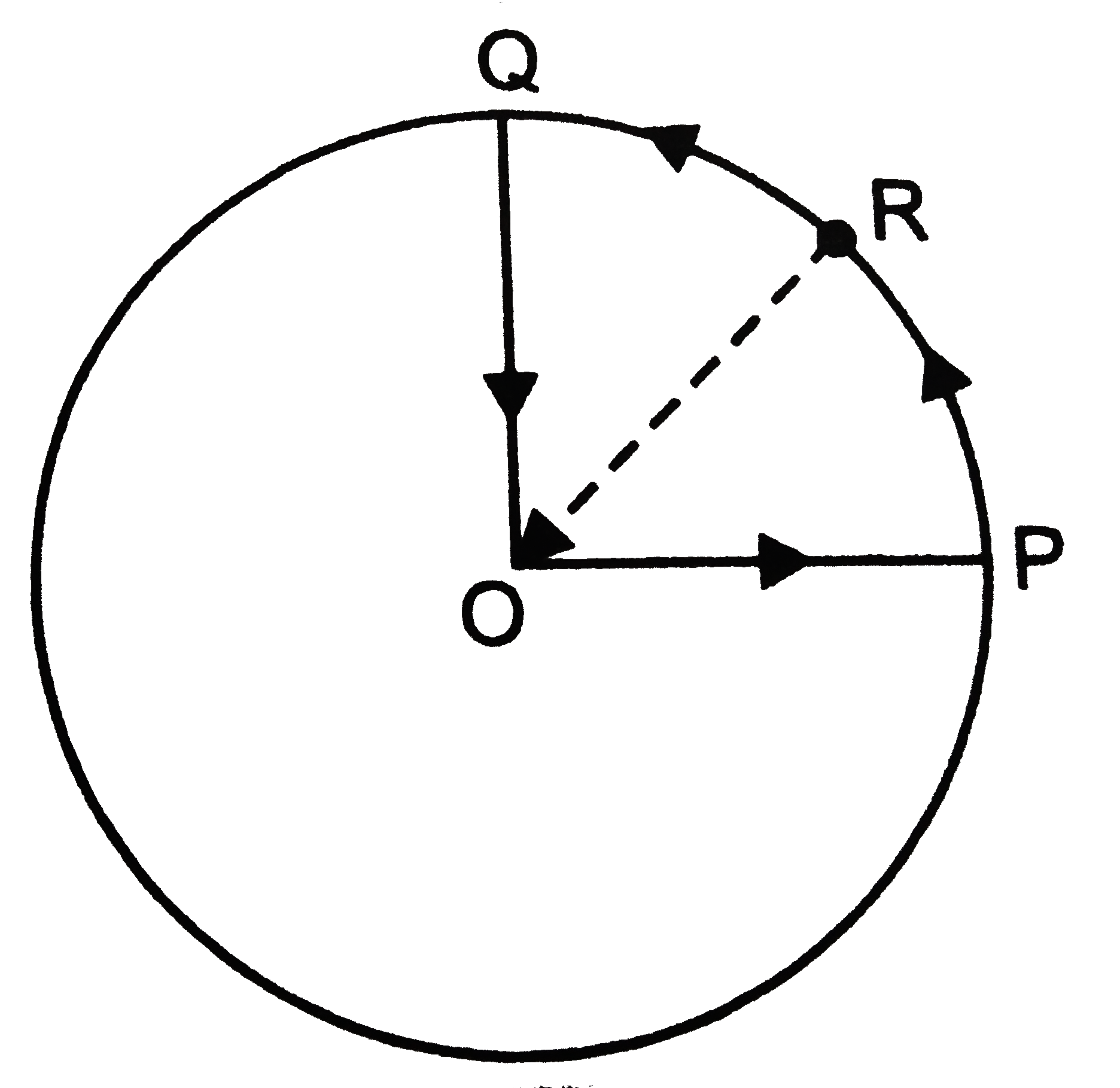An insect trapped in a circular groove of radius 12 cm moves along the groove steadily and completes 7 revolutions in 100s. A) What is the angular speed. And the linear speed of the motion? B) is the acceleration vector a constant vector? What is the its magnitude?
This is an example of uniform circular motion.
Here, R =12 cm. The angular speed ω is
Given by
ω=2π/T=2π×7/100=0.44 rad/s
The linear speed v is:
v=ωR=0.44S−1×12cm=5.3cmS−1
The direction of velocity v is along the tangent to the circle at every point. The acceleration is directed towards the centre of the circle. Since this direction changes continuously, acceleration here is not a constant vector. However, the magnitude of acceleration is constant :
a=ω2R=(0.44S−1)2(12cm)=2.3cms−2
Topper's Solved these Questions
- MOTION IN A PLANEBOOK - AAKASH SERIESCHAPTER - MOTION IN A PLANEEXERCISE - SHORT ANSWER TYPE QUESTIONS
6 Videos
- MOTION IN A PLANEBOOK - AAKASH SERIESCHAPTER - MOTION IN A PLANEEXERCISE - VERY SHORT ANSWER TYPE QUESTIONS
10 Videos
- MOTION IN A PLANEBOOK - AAKASH SERIESCHAPTER - MOTION IN A PLANEEXERCISE - EXERCISE-3 (Circular Motion)
7 Videos
- MOTION IN A STRAIGHT LINE BOOK - AAKASH SERIESCHAPTER - MOTION IN A STRAIGHT LINE EXERCISE - very Short answer type question
15 Videos
Similar Questions
An insect trapped in a circular groove of radius, 12 cm moves along the groove steadily and completes 7 revolutions in 100s. What is the angular speed and the linear speed of the motion ?
View SolutionAn insect trapped in a circular groove of radius 12 cm moves along the groove steadily and completes 7 revolutions in 100 s. (i) What is the angular speed and the linear speed of the motion ? (ii) Is the acceleration vector a constant vector ? What is its magnitude ?
View Solution
Knowledge Check
An insect trapped in circular groove of radius 12 cm moves along the groove steadily and completes 7 revolutions in 100s. The linear speed of the insect is
A4.3 cm s−1B5.3 cm s−1C6.3 cm s−1D7.3 cm s−1
An insect trapped in a circular groove of radius 12 cm moves along the groove steadily and completes 7 revolutions in 100s.What is the magnitude of the centripetal acceleration.
View SolutionAn insect trapped in a circular groove of radius, 12 cm moves along the groove steadily and completes 7 revolutions in 100s. What is the angular speed and the linear speed of the motion ?
What is the magnitude of the centripetal acceleration in above problem ?
View SolutionA disc of radius 10 cm is rotating about its axis at an angular speed of 20 rad/s. Find the linear speed of
a. a point on the rim,
b. the middle point of the radius.
View SolutionA cyclist starts form centre O of a circular park of radius 1km and moves along the path OPRQO as shown in the figure . If he maintains constant speed of 10ms−1, what is his acceleration at point (R )in magnitude and direction ?
 .
.
View SolutionA satellite moving in a circular orbit at an altitude of 1000 km completes one revolution round the earth in 105 minutes. What is (z) its angular velocity and speed? Radius of the earth =6.4×106m.
View SolutionA cyclist starts form centre O of a circular park of radius 1km and moves along the path OPRQO as shown Fig. 2 (EP).15. If he maintains constant speed of 10ms−1, what is his acceleration at point (R )in magnitude and direction ?
 .
.
View SolutionA body of mass 200g tied to one end of string is revolved in a horizontal circle of radius 50cm with angular speed 60 revolution per minute (rpm) on a smooth horizontal surface. Find (a) linear speed, (b) the acceleration and ( c) tension in the sting. what will happen if string is broken? (Take π2=10)
View Solution
